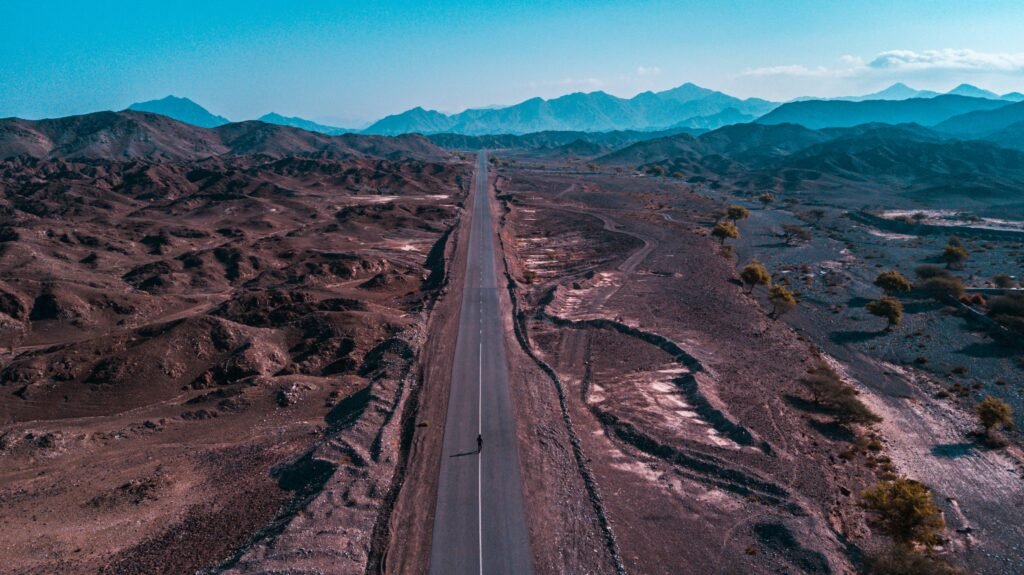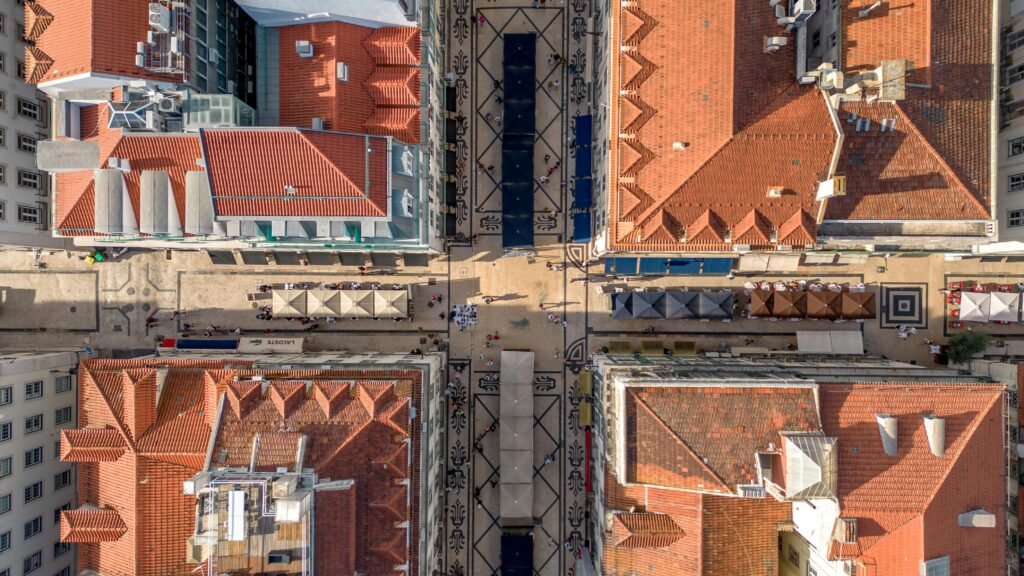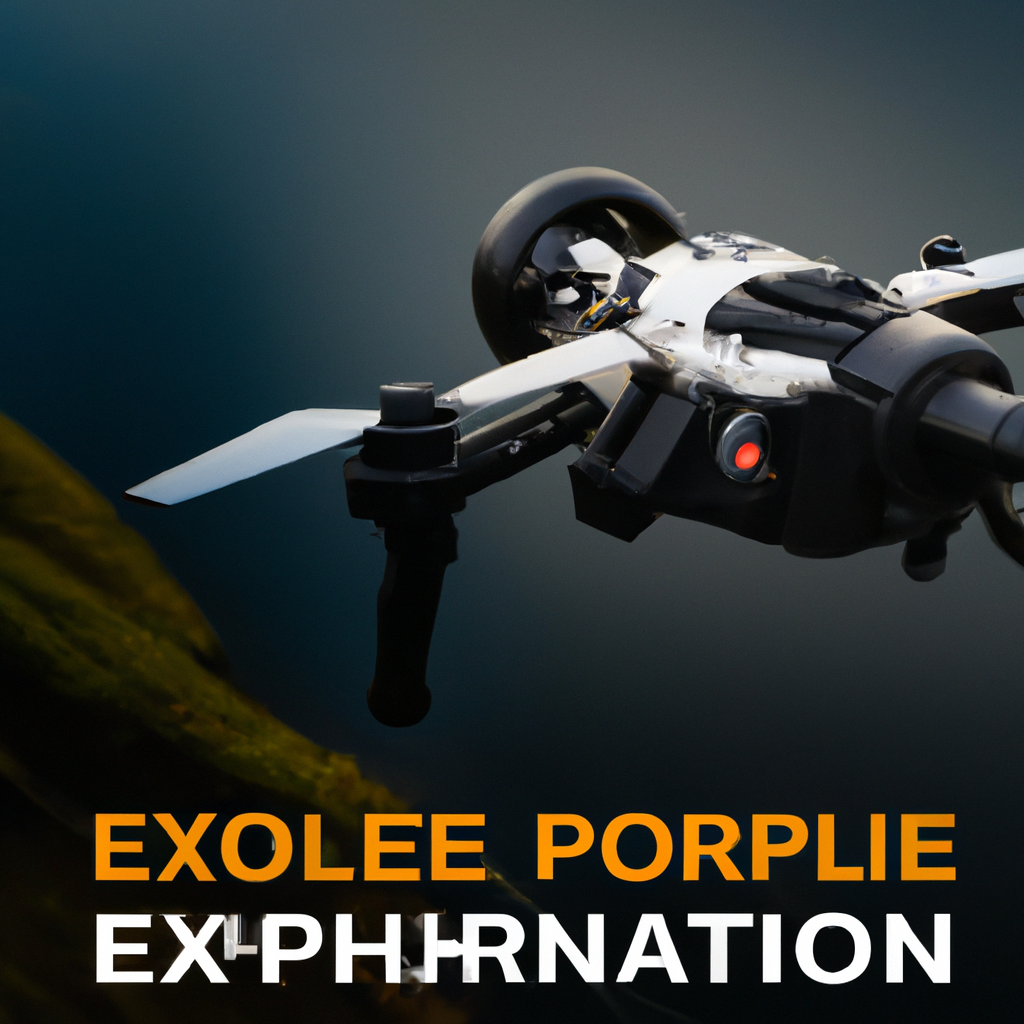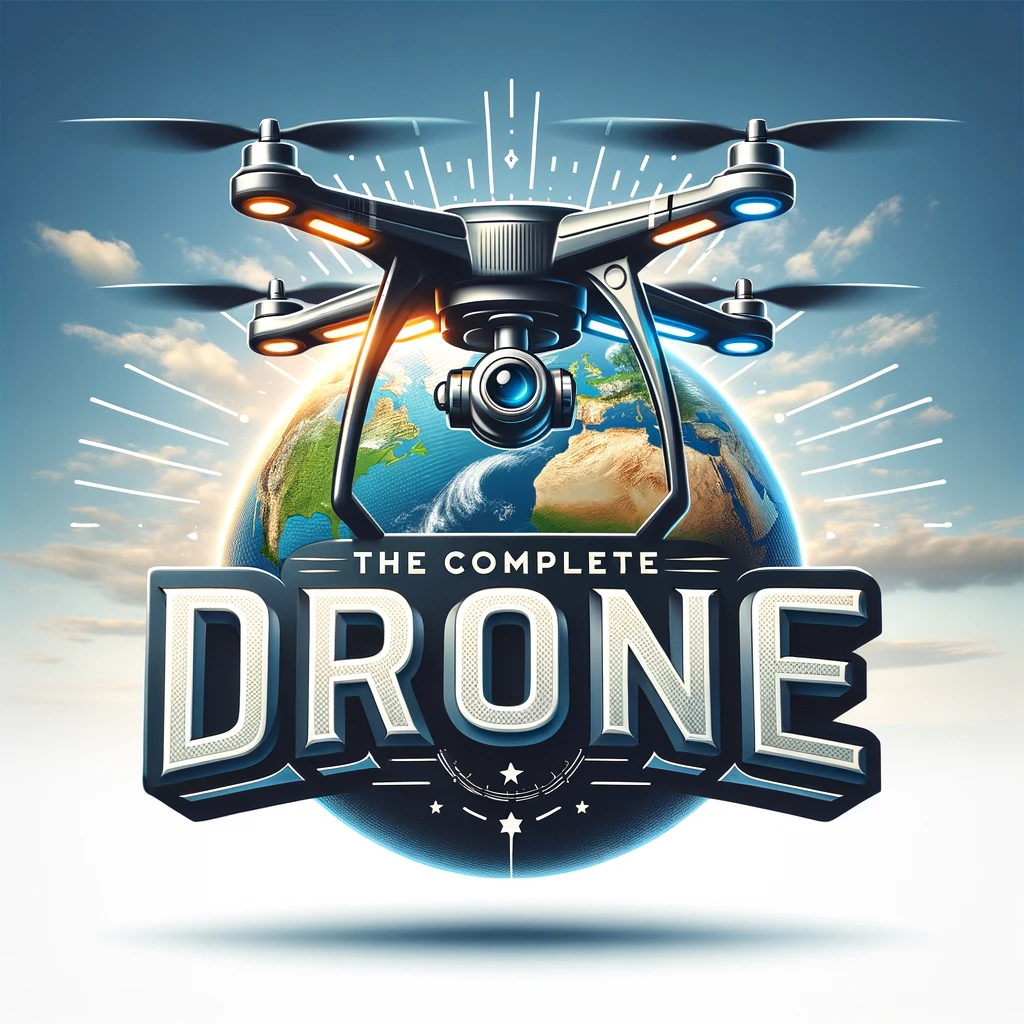Let’s talk about the incredible world of drones and their ability to capture stunning footage in 4K resolution. Drones, those innovative flying machines equipped with cameras, have revolutionized the way we capture aerial shots. But have you ever wondered if drones are capable of filming in the crystal-clear 4K resolution? In this article, we will explore the impressive capabilities of drones and their ability to capture breathtaking footage that will leave you in awe. So buckle up and get ready to soar through the skies of technology, as we embark on a journey to discover whether drones can indeed film in 4K.
Understanding 4K Resolution
What is 4K resolution?
4K resolution, also known as Ultra HD, refers to a display resolution of approximately 4000 pixels horizontally. It offers four times the amount of pixels as compared to standard high-definition (HD) resolution, resulting in sharper and more detailed images. In terms of pixel measurement, 4K resolution typically has a resolution of 3840 x 2160 pixels.
How does 4K resolution compare to other resolutions?
When comparing 4K resolution to lower resolutions such as HD (1920 x 1080 pixels) or Full HD (3840 x 2160 pixels), the difference is evident in terms of image quality and clarity. The higher pixel count in 4K resolution allows for more precise detailing, making it ideal for large screens or when viewers are in close proximity to the display.
Compared to standard definition (SD) resolution, 4K delivers a far superior viewing experience with significantly higher resolution and level of detail. It provides a more immersive and lifelike visual experience, whether for gaming, watching movies, or even aerial photography and videography.
Benefits of filming in 4K resolution
Filming in 4K resolution offers several advantages, especially when it comes to producing high-quality content. Here are some benefits of filming in 4K:
-
Crisp Image Quality: The higher resolution captures more detail and produces crisp, sharp images. This increased level of detail can be particularly useful when you need to crop or zoom in on footage during post-production.
-
Flexibility in Post-Production: 4K resolution provides greater flexibility when it comes to editing and post-processing your footage. With more pixels captured, you have more room to manipulate the footage without sacrificing quality, such as stabilizing shaky shots or altering the framing.
-
Future-Proofing: As technology continues to advance, devices and displays with 4K resolution become more commonplace. By filming in 4K, you future-proof your content, ensuring it remains relevant and visually appealing as 4K becomes the industry standard.
-
Downsampling: Even if your final output is not in 4K resolution, downscaling your footage from 4K to a lower resolution still offers improvements in overall image quality. Downsampling effectively reduces noise, enhances color accuracy, and reduces artifacts, resulting in a higher-quality final product.
Drone Cameras and 4K Filming
Types of drone cameras
Drones are becoming increasingly popular for aerial photography and videography, and many models come equipped with cameras capable of filming in 4K resolution. There are several types of drone cameras available, each with its own features and capabilities:
-
Integrated Cameras: These drones have a built-in camera that is permanently attached to the drone’s body. Integrated cameras offer ease of use and are typically lightweight, making them suitable for beginners or those looking for convenience.
-
Interchangeable Lens Cameras: Some high-end drones allow you to attach different lenses to the camera, providing versatility and the ability to achieve specific shots or effects. Interchangeable lens cameras offer greater control over depth of field, zoom capabilities, and other aspects of photography and videography.
Can all drones film in 4K?
While many drones on the market can film in 4K resolution, it’s essential to note that not all drones are created equal. When considering a drone for 4K filming, it’s crucial to check the specifications and capabilities of the camera it is equipped with.
Lower-end or budget-friendly drones may offer video recording in 4K, but the actual image quality and stability may not match that of higher-end models. It’s important to research and read reviews to ensure that the drone you choose can provide the desired level of image quality and stability for your 4K filming needs.
Limitations of drone cameras in filming 4K
While drone cameras capable of filming in 4K resolution offer numerous benefits, there are limitations to consider as well:
-
Image Stabilization: Due to the small size and lightweight nature of most drones, achieving stable footage can be challenging, especially in windy conditions. While some drones have built-in stabilization features, it’s important to consider additional stabilization methods such as gimbals or post-processing techniques to ensure smooth and professional-looking footage.
-
Sensor Size: Most drone cameras have smaller sensors compared to traditional cameras, which can impact image quality, particularly in low-light conditions. However, advancements in drone camera technology have significantly improved image quality, reducing the impact of sensor limitations.
-
Limited Battery Life: Filming in 4K resolution can put a strain on the drone’s battery, reducing flight time. It’s essential to consider this limitation and plan your shots accordingly to maximize your filming time.

This image is property of images.pexels.com.
Factors to Consider for 4K Filming with Drones
Drone stability and image stabilization
One of the critical factors to consider when filming in 4K resolution with a drone is the stability of the drone itself. A stable drone is vital to ensure smooth footage and avoid unwanted shakes or vibrations. Look for features such as GPS stabilization, altitude hold, or even advanced gimbal systems to enhance stability.
In addition to the drone’s stability, using external stabilization devices such as gimbals can significantly improve the quality of your 4K footage. Gimbals work by counteracting the drone’s movements, resulting in steady and professional-looking video footage.
Camera capabilities and settings
When filming in 4K resolution, it’s essential to understand the camera capabilities and settings of your drone. Familiarize yourself with the camera’s field of view, aperture, ISO range, and white balance settings. Adjusting these settings can help you achieve the desired look and feel for your footage.
Additionally, some drones offer manual control over camera settings, providing greater flexibility and creative control when capturing your shots. Take the time to learn and experiment with these settings to make the most out of your 4K filming experience.
Storage and memory requirements
Filming in 4K resolution requires a significant amount of storage space. The higher resolution footage takes up more memory on your drone’s storage media, such as an SD card. Ensure that you have ample storage capacity to accommodate your filming needs, as running out of storage space can disrupt your filming session.
Consider investing in high-speed and high-capacity SD cards to ensure smooth recording and prevent any potential data loss or corruption. It’s also a good practice to have multiple SD cards available, allowing you to switch cards when one becomes full.
Battery life and flight time limitations
It’s crucial to be aware of the battery life and flight time limitations of your drone when filming in 4K resolution. Higher-resolution footage requires more processing power, which can drain the drone’s battery more quickly than when shooting in lower resolutions.
To maximize your filming time, it’s advisable to have spare batteries on hand and fully charged. This way, you can swap batteries when needed and continue filming without interruption. Planning your shots and knowing your drone’s flight time limitations will help ensure you capture all the necessary footage within the available battery life.
Best Drones for 4K Filming
DJI Phantom 4 Pro
The DJI Phantom 4 Pro is a popular choice among professional filmmakers and aerial photographers. It features a 1-inch 20-megapixel camera capable of shooting 4K video at up to 60 frames per second. With its advanced object tracking and obstacle avoidance capabilities, the Phantom 4 Pro offers stability and safety during 4K filming.
Autel Robotics Evo II
The Autel Robotics Evo II is another top contender in the field of 4K filming drones. It boasts an 8K camera sensor with the capability to shoot 4K video at 60 frames per second. The Evo II’s foldable design, long flight time, and advanced tracking features make it a versatile option for capturing stunning 4K footage.
Yuneec Typhoon H Pro
The Yuneec Typhoon H Pro is a hexacopter drone that excels in 4K filming and aerial photography. Equipped with a 4K camera and a wide range of intelligent flight modes, including follow-me and orbit, the Typhoon H Pro offers filmmakers the ability to capture cinematic shots with ease.
DJI Mavic 2 Pro
The DJI Mavic 2 Pro is a compact and portable drone that packs powerful features for 4K filming. It features a Hasselblad camera with a 1-inch CMOS sensor, allowing for exceptional image quality and color accuracy. With its foldable design and advanced obstacle avoidance system, the Mavic 2 Pro is a go-to choice for filmmakers on the go.
PowerVision PowerEgg X
The PowerVision PowerEgg X is a unique and versatile drone that excels in both aerial photography and 4K filming. Its modular design allows it to transform from a compact egg shape to a traditional quadcopter, offering flexibility in capturing different types of shots. With its built-in waterproof housing, the PowerEgg X can even capture underwater footage in 4K resolution.

This image is property of images.pexels.com.
Editing and Processing 4K Footage from Drones
Software and hardware requirements
Editing and processing 4K footage requires capable hardware and software to handle the large file sizes and processing power demanded by the higher resolution. To effectively edit and process 4K footage, consider the following software and hardware requirements:
-
Powerful Computer: A high-performance computer with a fast processor, ample RAM, and a dedicated graphics card is essential for smooth video editing and rendering. This will ensure that your computer can handle the processing demands of 4K footage.
-
Video Editing Software: Choose a professional-grade video editing software that supports 4K editing. Some popular options include Adobe Premiere Pro, Final Cut Pro, and DaVinci Resolve. These software packages offer a range of editing and post-processing tools specifically designed for handling high-quality footage.
Workflow for editing 4K footage
When editing 4K footage from drones, it’s important to establish an efficient workflow to streamline the editing process. Consider the following steps in your editing workflow:
-
Importing Footage: Transfer your 4K footage from the drone’s storage media to your computer. Take care not to damage or corrupt the footage during the transfer process.
-
Organizing and Selecting Clips: Sort and organize your footage based on your shot plan or desired sequence. Select the best clips to include in your final edit.
-
Culling and Trimming: Review your clips and remove any unnecessary or unusable footage. Trim the remaining clips to remove any unwanted sections and create a more cohesive story.
-
Color Correction and Grading: Adjust the colors, contrast, and overall look of your footage to achieve the desired visual style. Use color grading tools to enhance the mood and tone of your video.
-
Adding Effects and Transitions: Enhance your footage with visual effects, transitions, and text overlays. Use these elements to add creativity and professionalism to your final edit.
-
Audio Editing and Mixing: Enhance the audio quality by removing background noise, adjusting levels, and adding music or sound effects. Ensure that the audio complements the visuals and enhances the overall viewing experience.
-
Rendering and Exporting: Once your edit is complete, render and export your video in the desired format and resolution. Choose settings that maintain the quality of your 4K footage during export.
Color grading and post-processing techniques
Color grading is an essential step in the post-processing of 4K footage. It involves adjusting the colors, contrast, and overall look of the footage to achieve a specific visual style or mood. When color grading 4K footage, consider the following techniques:
-
Color Calibration: Use color calibration tools to ensure accurate colors and white balance in your footage. This helps create consistent visuals and prevents color inaccuracies between shots.
-
Contrast and Exposure: Adjust the contrast and exposure levels to enhance the dynamic range of your footage. This can help bring out details in both the bright and dark areas of the image.
-
Color LUTs: Apply color lookup tables (LUTs) to achieve a specific cinematic look or to match the color grading of other footage. LUTs can be used to create a consistent visual style across different shots or projects.
-
Selective Color Correction: Target specific colors or areas in the image to adjust and fine-tune. This can be particularly useful for correcting skin tones or emphasizing specific elements in the frame.
-
Secondary Color Correction: Separate specific elements or objects in the frame to apply different color grading adjustments. This technique allows for precise control over the look and feel of individual elements within the footage.
Implementing these color grading techniques can elevate the overall visual quality and storytelling aspects of your 4K footage.
Challenges and Considerations for 4K Filming with Drones
Bandwidth and data transfer issues
Filming in 4K resolution generates large file sizes, which pose challenges in terms of bandwidth and data transfer. Uploading, transferring, or streaming 4K footage can be time-consuming and may require faster internet connections and reliable data transfer methods.
To overcome bandwidth and data transfer issues, it’s advisable to use high-speed internet connections or transfer the footage directly from the drone’s storage media using a card reader or similar device. This can help expedite the transfer process and ensure smoother workflow during post-production.
Impact of weather conditions
Weather conditions can significantly impact the quality and safety of 4K filming with drones. Strong winds, rain, or extreme temperatures can affect the stability of the drone, resulting in shaky footage or even crashes.
Before embarking on a 4K filming session, it’s essential to monitor weather conditions and plan your shoot accordingly. Avoid filming in unfavorable weather conditions that may compromise the safety of your equipment and the quality of your footage. Always prioritize the well-being of your drone and consider rescheduling the shoot if necessary.
Flight restrictions and regulations
When filming in 4K resolution with drones, it’s crucial to be aware of any flight restrictions and regulations in your area. Different countries and regions may have specific rules and limitations for drone operations, including altitude limits, no-fly zones, and registration requirements.
Before taking off, research and familiarize yourself with the local regulations to ensure compliance and avoid any legal issues. Consult local authorities or aviation organizations if you have any doubts or questions regarding the rules and restrictions for drones in your area.
Cost implications
Filming in 4K resolution with drones often entails additional costs compared to lower-resolution filming. Higher-resolution cameras, advanced stabilization systems, and professional-grade editing software can come at a premium price.
Before investing in a drone for 4K filming, it’s important to consider your budget and the overall cost implications. Factor in not only the cost of the drone itself but also any additional accessories, spare batteries, and storage media required. Proper budgeting will help ensure that you have the necessary resources to achieve your desired 4K filming goals.

This image is property of images.pexels.com.
Tips and Tricks for Successful 4K Filming with Drones
Choose the right drone for your needs
Selecting the right drone for your 4K filming needs is crucial. Consider factors such as camera quality, stabilization features, flight time, and overall reliability. Research and read reviews to make an informed decision that aligns with your specific requirements.
Mastering piloting and camera control
To capture smooth and professional-looking footage, it’s essential to master piloting and camera control techniques. Practice flying your drone in different conditions and environments to improve your piloting skills. Experiment with different camera movements and angles to add creativity and visual interest to your shots.
Plan your shots and compositions
Preparation and planning are key to successful 4K filming with drones. Before taking off, have a clear vision of the shots you want to capture and plan your flight path accordingly. Consider the movement of your subject, the lighting conditions, and the overall composition of your shots. This will help you capture compelling footage and minimize wasted flight time.
Manage storage and backup of footage
With the large file sizes generated by 4K filming, efficient storage and backup practices are essential. Invest in high-capacity, high-speed storage media such as SD cards to accommodate your filming needs. Additionally, make it a habit to back up your footage regularly to prevent any potential data loss or corruption.
Applications of 4K Filming with Drones
Aerial cinematography and videography
The most common and obvious application of 4K filming with drones is in aerial cinematography and videography. Drones provide a unique perspective and the ability to capture stunning aerial shots in high resolution. From scenic landscapes to action-packed sequences, 4K footage from drones can create visually captivating content in various industries.
Real estate and property photography
The real estate and property industry can greatly benefit from 4K filming with drones. High-resolution aerial footage allows potential buyers to get a comprehensive view of the property and its surroundings. The clarity and detail provided by 4K resolution help showcase the unique features and selling points of the property.
Sports and action filming
Drones equipped with 4K cameras are ideal for sports and action filming. From capturing fast-paced races to extreme sports, drones can provide unique angles and follow the action, resulting in dynamic and immersive footage. The higher resolution ensures that every detail of the action is captured with clarity.
Nature and wildlife documentation
Documenting nature and wildlife in 4K resolution presents an opportunity to capture the beauty and intricacies of the natural world. Drones equipped with high-resolution cameras can film from a distance without disturbing the animals or their habitats, resulting in stunning and intimate footage. From bird’s-eye views of migrating herds to close-ups of elusive wildlife, 4K filming with drones enhances the documentation of nature.

Future of 4K Filming with Drones
Advancements in drone technology
The future of 4K filming with drones holds exciting advancements in drone technology. Continued innovation and development in camera sensors, stability systems, and flight capabilities will lead to even more capable drones for capturing high-quality footage. Expect to see improved image quality, better low-light performance, and enhanced stability in future iterations of drones.
Emerging trends in aerial cinematography
As drone technology continues to evolve, the field of aerial cinematography will see emerging trends and techniques. One such trend is the use of autonomous flight modes and intelligent tracking features, allowing drones to capture complex shots with minimal input from the operator. Additionally, the integration of artificial intelligence and machine learning algorithms in drones may enhance image stabilization and post-processing capabilities.
Potential for higher resolutions beyond 4K
While 4K resolution is currently the industry standard for high-quality video, the potential for higher resolutions beyond 4K is on the horizon. Technological advancements, such as developments in camera sensors and processing power, may pave the way for resolutions such as 8K or even higher. Higher resolutions would not only offer more detail and clarity but also provide greater flexibility in post-processing and editing.

